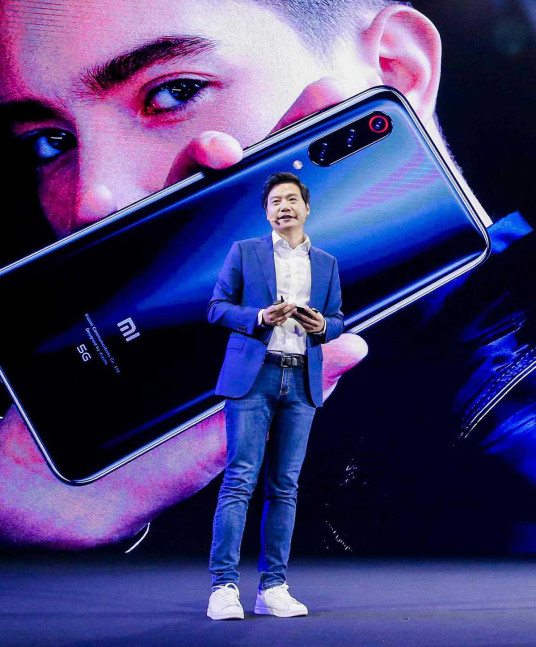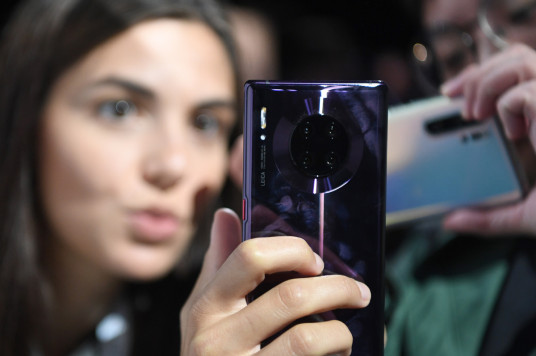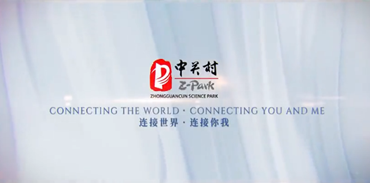Xiaomi steps on the 5G bandwagon
 |
|
Lei Jun, founder and CEO of Xiaomi, speaks at the brand's 5G smartphone launch ceremony on Tuesday in Beijing. [Photo provided to China Daily] |
Leading smartphone vendor charts plans to launch more top-end and affordable handsets for early adopters
At a much-anticipated event in Beijing on Tuesday, Chinese smartphone vendor Xiaomi Corp showcased the culmination of its years of design and engineering effort with Mi MIX Alpha.
The 5G-powered concept phone is what Lei Jun, founder and CEO of Xiaomi, said future 5G smartphones will look like. Priced from 19,999 yuan ($2,800), the MIX Alpha, is the company's latest endeavor to transcend technological boundaries.
It has an innovative surround screen with a screen-to-body ratio of more than 180.6 percent. That is to say, when Mi MIX Alpha lights up - the front, side, and back of the phone are almost entirely covered by displays, except for where the cameras are located.
At the same launch event, Xiaomi, the world's fourth-largest smartphone vendor, also demonstrated the most affordable 5G handset in China so far: the Mi 9 Pro 5G with a starting price of just 3,699 yuan.
The price is about 2,000 yuan to 3,000 yuan lower than 5G alternatives unveiled by domestic rivals such as Huawei Technologies Co and foreign competitors such as Samsung Electronics Co, and falls in the same price range as some of the 4G handsets currently selling in the market.
The sharp divergences between the prices of Xiaomi's two 5G smartphone models underline the company's strategy of stepping up its push in two directions.
The first step is to revive a market mired in an innovation lull with cutting-edge and premium designs, and the other is to establish a beachhead in the market with an affordable device to woo as many early-adopters as possible.
It also underscores the mounting competition in China, the world's largest smartphone market which has been declining for months in terms of shipments. In fact, Xiaomi's double-edge strategy has been adopted by another Chinese smartphone vendor Vivo. It has also come up with two 5G models targeting both premium and affordable ranges.
So far, 11 5G smartphone models, from Huawei, Samsung, Vivo, ZTE and China Mobile, have been launched in China in August and September. More are scheduled to come in the following months.
Pinning hopes on the new-generation devices to revitalize the market, Chinese smartphone makers are scrambling to woo early adopters and hope to gain a first-mover advantage in the global 5G battle.
The country granted licenses for commercial use of the new-generation wireless technology on June 6.In July, 72,000 units of 5G smartphones were shipped in China, data from the China Academy of Information and Communications Technology showed.
According to a survey by Citibank, 87 percent of the Chinese consumers indicated they might or will buy a 5G phone this year.
Chinese companies' eagerness to embrace 5G is in sharp contrast to Apple Inc. The US tech giant did not include 5G connectivity with its latest iPhones unveiled in early September.
 |
|
A model holds the newly released Huawei Mate 30, a 5G smartphone, in Munich, Germany on Sept 20. [Photo/Xinhua] |
Fu Liang, an independent analyst who has been following the telecom industry for more than a decade, said a key hurdle in 5G adoption is the prices of 5G smartphones and 5G network support. Given the limited coverage of the 5G network around the world, it makes sense, to some extent, for Apple to not launch 5G handsets for now.
"But Chinese companies are adopting very aggressive strategies to extend 5G coverage and lower the prices. The more quickly 5G network are constructed, the cheaper the smartphones and the easier it will be to convince people to purchase them," Fu said.
China Telecom, the country's third-largest telecom carrier by subscribers, for instance, said it will work along with key smartphone vendors to unveil 5G handsets priced under 2,000 yuan in the first half of next year.
That is far earlier than predications made by experts. China Mobile, a major rival of China Telecom, said it plans to launch 5G smartphones priced at 1,000 yuan to 2,000 yuan by the end of 2020.
James Yan, research director at Counterpoint Technology Market Research, said the prices of 5G smartphones are lower than market expectations. 5G handsets differ from 4G versions in components, including chips, radio frequency, antennae, and power amplifiers. The added costs of such parts are about $80.
Qin Fei, general manager of telecom research at Vivo, which is the first company to lower the price of 5G smartphones in China to less than 4,000 yuan, said at a suitable price, users can use 5G phones as soon as possible. On that basis, new mobile apps will emerge, as software developers will become better motivated to see that 5G users are growing rapidly. This, he said, will create a virtuous circle in the 5G market.
"On top of fast downloading speed, we should encourage software developers to come up with more innovative applications for 5G smartphones," Qin said.
At the same time, China Telecom announced that it would partner with China Unicom to build a nationwide 5G network, as they aim to accelerate the rollout of 5G by reducing construction costs.
That marked a rare cooperation for the second-and third-largest telecom operators in the country and the move is expected to expedite the coverage of the superfast wireless technology, giving consumers more confidence to buy 5G smartphones.
But it is also worth noting that Miao Wei, minister of industry and information technology, the nation's top industry regulator, said in a recent news conference that among the 11 5G smartphone models, most of them only support 5G connectivity via non-standalone networks and can't fully demonstrate the performance of 5G technologies.
"Next year, China will ramp up its push to adopt stand-alone network architecture to build 5G networks on a large scale. Then, it will have more innovative applications for 5G smartphones," Miao said.
A non-standalone network differs from a stand-alone one as it still relies on existing 4G infrastructure to realize some of its functions.
Wang Liming, a white-collar worker in Beijing said "it would be better to buy a 5G smartphone next year, but seeing 5G handsets with strong capabilities and an appealing price, I feel it is OK to be among the early adopters of 5G smartphones."

